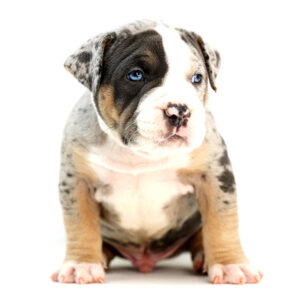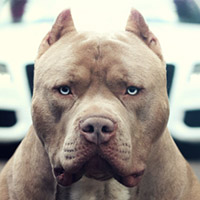DOG SHOW VIDEOS
VIDEOS FROM WILL ALEXANDER ON HOW TO HANDLE A SHOW DOG
DOG SHOW ARTICLES
VARIOUS USEFUL ARTICLES FOR SHOWING YOUR DOG
1. Don't Slack on Socialization
A great show dog is either made or lost according to how well she was socialized as a pup. A puppy may have perfect conformation, but if she's shy with people and wilts like a flower when you take her to new places, she will never perform well enough to win in the ring.
Once the puppy has been vaccinated, take her everywhere with you.
- Expose her to new places, people, situations, noises, etc.
- Walk her on grass, cement, carpet, linoleum and rubber matting so different surfaces don't freak her out.
- Take her to puppy socialization classes, aka puppy kindergarten, so she becomes used to meeting a lot of other dogs.
- Encourage people to pet her and gently look in her mouth so she gets used to being touched by strangers (who sometimes happen to be judges).
All of these experiences will teach the pup to take everything in stride and give her confidence. Confidence is a key trait found in all top show dogs that gives them the winning stride and attitude that judges love to see.
2. Attend Conformation Training Classes
Most active kennel clubs offer weekly training classes instructed by experienced dog handlers, and they usually only charge a few dollars to attend. Classes like this are invaluable to a novice exhibitor because the instructors will teach you all the basics of how to present a dog in the ring. Your dog will also learn what's expected from her when she competes at a dog show.
You'll learn how to:
- Gait your dog around the ring
- Stack her for examination (on the table or on the ground, according to her size)
- Perform the basic patterns, such as the triangle, the "L," and the down and back
- One additional bonus to attending conformation classes is that the instructor and other breeders can evaluate your dog's conformation and help you decide if she really belongs in the show ring. This is a hard fact that many novice exhibitors don't consider until they've wasted considerable money showing a dog that doesn't really have a chance of winning.
3. Judges Like a Clean Dog
Although excessive grooming is discouraged in many breeds, no judge really wants to touch a dirty dog. Even if weekly bathing isn't recommended for keeping your dog's coat in proper texture, you can still spot bathe areas like the face legs and undercarriage to keep them fresh. Most breeds should be given a bath the day before the show weekend and then brushed and spot bathed as needed to keep them in top condition.
4. Reduce Staining on White Fur
Stains can spoil the look of an otherwise white coat. Staining around the eyes and muzzle, as well as urine staining on the rear legs, can give the judge the impression that the dog is not well-cared for between shows.
To help keep stains at a minimum:
- Combine one-part powdered boric acid with two parts cornstarch and use a small makeup brush to carefully brush the powder into the stained areas daily. You can also use it at the dog show to brighten and dry damp hair, but remember to brush it out so your dog doesn't shake it out in the ring and look like a powder puff. Judges can dismiss dogs from the ring for having foreign substances in their coats.
- Protect areas prone to staining by wrapping and/or banding them. Just be sure to use high-quality rubber bands, or the hair might break with repeated wrapping.
- You can also try using a shampoo formulated especially for brightening white coats, but these products do not work miracles. Keep your dog clean all the time, and staining will be minimal.
5. Trimming and Sculpting
Long-coated breeds like Shih Tzus, Lhasa Apsos, Yorkies and Maltese need trimming to keep them looking neat, as well as keep them from tripping on their hair and hindering their gait. However, the way you trim or "sculpt" the coat can affect what a judge sees, although a top-notch judge will not necessarily be fooled by a good trim once he puts his hand on the dog.
- If your dog's legs are a little too close together in the front or rear, trim the outline of the paws slightly shorter on the inside to create a little more distance between the paws when the dog stands or moves.
- You can make an older dog look a little fresher and more youthful by carefully trimming a little length off the head fall, beard, ears and tail, as part of a regular trim.
- Trimming a small section of hair directly in front of the dog's tail, as well as trimming a slight amount of hair away from the back of the tail just above the anus, can make a low tail set look a little higher.
6. Start Out in the Middle
When you enter the ring for your class, try not to be the first or last dog in the lineup. Sometimes judges will make all the competitors line up in order as printed in the show catalog, but if you have a choice, try to be somewhere in the middle.
You want to do this for several reasons:
- If there's at least one dog ahead of you, this gives you more time to have your dog stacked in perfect position and brushed (if she has a longer coat). The first handler in line doesn't have as much time to fuss over the dog since the judge will examine that dog immediately after the entire group is gaited around the ring.
- The last handler in line will also have to work quickly to make the dog look perfect because the judge will already be giving all the dogs one final look as the last dog in line completes her individual go around the ring.
- If you're in the middle, you have plenty of time to keep your dog looking good before the judge runs the entire class around the ring one last time and chooses the winner.
7. Always Keep One Eye on the Judge
A smart handler always knows where the judge is standing in the ring and what he's doing. This allows the handler to make sure the judge never sees her dog standing incorrectly and revealing faults.
Keeping an eye on the judge also helps you look more professional. Each dog is allotted about two minutes to be judged, and judges do not want to waste time calling up an exhibitor twice when she's not paying attention.
8. Learn to Gait Your Dog at the Correct Speed
It's a rare dog that has perfect conformation, so most show dogs have a fault somewhere. If your dog's fault is in somewhere in her gait, you need to figure how fast or slow you need to walk her so she moves at her best. Have a friend walk the dog for you as you watch.
Rear Movement
Look at how the dog's legs move when she walks away directly from you. If they are weak and the hocks tend to lean in toward each other, see if moving the dog faster or slower makes them stay more parallel to each other.
Front Movement
Next, look at the front legs as the dog walks toward you. If the feet tend to converge close together, try moving the dog a little slower to see if this corrects the movement.
Side Movement
Finally, look at the dog from the side as she moves. Are her shoulders laid back instead of hunched behind her neck? Do her feet kick out behind her a bit as they should? Does her topline remain smooth instead of bouncing up and down? Practice with her at different speeds to find which one helps her move as correctly as possible.
9. Keep Your Dog Between You and the Judge
The judge is supposed to be judging your dog, not you, so keep the dog between the two of you at all times. If the judge asks you to walk your dog in the "L" pattern, make sure you switch hands with the lead and walk the dog on the other side of you so the judge can see her instead of your legs blocking his view.
10. Keep Yourself Calm
Nothing can spoil a show dog's performance more than a nervous handler. If you feel keyed up and anxious, the dog will feel it through your hands and the show lead, and this will shake her confidence. Take slow, deep breaths to steady yourself, and pay attention to everything going on in the ring. If you've prepared your dog properly, there's no need to feel nervous. The judge is the one who points the finger at the winner, and that's something that you ultimately can't control. Just focus on working with your dog as a team.
Gaining True Expertise Takes Time
Tips can help you move ahead a little faster in the dog show world, but gaining real expertise takes time and experience. If you have a dog that is truly show quality but you don't think you're winning as much as you should, take a look at what the winners are doing. Study your competitors' dogs, and study how they handle them in the ring, as well as how they prepare them in the grooming area. Apply what you learn to how you prepare and show your dog, and you just might wind up with a champion.
There's nothing quite like the thrill you feel when you walk into the ring and take your place among the other handlers and their dogs. That excitement literally travels down the lead to your dog as the two of you become a team.
Does this sound like your idea of fun? Then read on to learn how to show dogs in the ring. We'll teach you the basics you need to know to get you started. After that, the rest is up to you!
How to Show Dogs in the Ring
Let's break down ring procedure step by step.
Step One: Line Up
You've picked up your arm band from the ring steward and your class has just been called.
The first thing you'll do is walk into the ring with the other exhibitors and line up in a row along one side of the ring. Where should you stand? Sometimes a judge will require everyone to line up in catalog order, according to their arm band number. Other times you're left to sort it out for yourself.
In most cases, it's best to start out somewhere in the middle. This gives you time to primp and pose your dog while others are examined individually ahead of you as well as time to make sure your dog is looking perfect again before the last dog is judged.
Once the ring steward has marked the numbers present, the judge will ask everyone to take their dog around. You will move counterclockwise with your dog on your left side at a pace that shows off your dog's movement to the best advantage. Everyone will make a complete circuit around the ring and stop where they began.
Step Two: Individual Examination
The judge will conduct an individual examination of each dog, starting at the head of the line. When it's your turn, you will pose or "stack" your dog so it is standing correctly. You'll do this on the floor for a large dog, or on a grooming table provided for smaller breeds. The judge will thoroughly go over your dog with her hands to feel the bone structure/conformation and coat texture, comparing it to the breed standard. Your dog's mouth will be opened and the teeth will be inspected.
Next, the judge will ask you to move your dog in one or more ways.
These might include:
- Down and back: You'll walk your dog away from and back to the judge to show how well the front and back legs move.
- Make an L: Here, you'll move your dog down the runner away from the judge, turn left at the corner and proceed to the next corner in order to give the judge a side view of your dog's movement. At that corner, switch your dog to your right side so it's between you and the judge, then walk it back in the same manner to where you began. Stack your dog in place on the floor.
- Make a triangle: This involves making an L, except rather than retracing your steps back to the judge, you'll return to the judge down the center diagonal runner.
Once you complete whichever pattern the judge asks for, you'll be asked to move your dog around the ring and back to your place.
Step Three: Placements
Once every dog has been examined, the judge will usually begin to line up her favorites near the head of the line. She will pull several dogs out and show the handlers where she wants them to stand. If you have a good specimen and your dog is showing well, you might be lucky enough to move into one of the first four spots. Typically, the judge will ask everyone to move their dogs around the ring together one more time, and then she'll point to her choices, assigning them one, two, three or four. If you are chosen, move to the corresponding sign near the steward's table, show your arm band for recording purposes and accept your ribbon from the judge.
These basic procedures are repeated for every class you participate in.
Competing for Winners
If your dog took first place in your class, you'll compete again in a few minutes for the Winners class. If you win the Winners class, your dog will return to the ring in a few moments for Best of Breed competition.
If you took second place, hang around. If the dog that took first place in your class happens to take Winners class, you'll be asked to return to the ring, where your dog will be compared to the others in consideration for Reserve Winners. This is an important ribbon because if the Winner's Dog is later disqualified for any reason, your dog will be awarded the points toward its championship.
Best of Breed
If your dog took the Winners class in its sex, it will go on to compete for Best of Breed along with the winner from the opposite sex's class, as well as any Champions of record that are entered to compete. If your dog is judged to be the best, you'll be awarded the coveted BOB ribbon.
From there, you'll move on to Group competition, and should your dog take first place there, it's on to Best in Show!
Final Tip
Like anything, practice makes perfect. Watch the pros for hints on how to make your dog look good in the ring.
Piloting a great dog around the show ring can be a thrilling experience for some people, and an uncomfortable moment for others. The fact is, that while many people love dogs and want their purebreds to become champions, it takes a lot of skill and knowledge to present a winner. If you're uncomfortable with ring procedures and/or being the center of attention, it may well be worth hiring a dog show handler to take over for you.
In a nutshell, it's the dog show handler's job to:
- Properly groom your dog according to the breed standard
- Be present and on time to present your dog in the ring when called
- Move the dog around the ring competently to show it off to its best advantage
- Keep the dog looking good at all times in case the judge gives an unexpected glance
- Remain alert for the judge's instructions and follow them
- Do all of the above with a courteous and professional manner
That takes care of basic ring presentation, but many handlers offer more services than this. A handler might also:
- Offer boarding, conditioning, training and daily grooming services
- Provide safe care and transportation for the dog to and from the show in the event an owner chooses not to attend
- Handle breeding services for any dog under his or her care as agreed upon with the owner
These are the standard duties of any dog handler, but each handler/owner team works out their own unique agreement as well as what kind of fees these services entail. At best, the agreement should be in writing and signed by both parties to establish a true meeting of the minds.
What to Look for in a Good Handler
Finding a dog handler is easy. There are many exhibitors that would like to begin presenting other people's dogs for a fee. The trick is sorting out the true professionals from the posers.
When searching for a dog handler, it's best to take your time and watch each potential handler in the ring, as well as back at the grooming set up.
In no particular order, a good handler:
- Dresses professionally for the ring
- Exhibits good manners no matter who may or may not be watching
- Handles each dog with kindness and affection both in and out of the ring
- Is prepared with all the supplies and paperwork necessary for the show
- Keeps the dog's holding pen scrupulously clean
Fees
Fees vary widely between handlers, and they can reflect the demand for that professional as well as his or her winning record. A standard ring fee can run from $50.00 to $150.00 or more depending on the breed being shown. Larger breeds and dogs with substantial coat care needs generally rate a higher fee. Additionally, some handlers will charge an extra fee to present your dog in the group and Best in Show rings. If you board your dog with the handler, you will be charged a daily fee that includes feeding, cleaning, exercising and grooming your dog. Show bathing may cost extra. Get all of the various fees in writing before you make an agreement so you'll have a good idea of how much this venture will cost. Also make sure whether the handler will send in your show entries for later reimbursement, or if you will need to coordinate sending entries for shows the handler will attend with your dog.
How to Find a Professional Handler
Some handlers are members of professional organizations while others are independent. Either one may suffice since it is each handler's personal conduct, talent and professionalism that determines whether it is worth paying this individual to show your dog. That said, members of handling organizations are often bound by a code of ethics that helps ensure you and your dog will be treated properly.There are many ways to scout out dog handlers, including:
- Checking for handlers listed in the show catalog and watching them present a number of dogs
- Watching handlers that present your own breed
- Asking other dog owners for references on their handlers
- Contacting handlers via the business card section of any show catalog
- Contacting a professional handler's organization
Sometimes a handler will actually contact you. This often happens when a handler spies a truly good specimen and wants to present it in the ring. Handlers want to show winners, and will sometimes be willing to offer you a deal if you have a dog they really want to show. This can often be beneficial for owners even if they were planning on showing the dog themselves. A great dog and a top-notch handler are a difficult combination for anyone to beat.
Inspections
If you're planning on boarding your dog with a handler for the duration of its show career, you'll need to take extra steps to ensure your dog will be well cared for.
- Visit the handler's kennel to make sure it is clean, roomy, well-equipped with grooming/handling supplies and staffed by friendly employees who stay behind to care for dogs not being shown that weekend. Also make sure the kennel is properly climate controlled.
- Take a good look at the kennel dogs. Are they just as clean and cared for as the dogs currently being shown? They should be.
- Likewise, take a look at the handler's vehicle. Does it look road safe? Does it have heat/AC? Is there enough room for all the dogs and equipment without blocking air flow and quick access to the dogs?
Mundane as it is, packing for the big day must be done. If you are wondering what to bring at a dog show, important items to remember are:
- the bait you will use for your dog in the ring,
- your paperwork,
- all the grooming supplies,
- a first aid kit,
- your lead,
- a water bowl and extra water,
- a comfortable dog bed,
- a soothing blanket,
- high-quality dog food (not the time to experiment!),
- a gazillion of poop bags, and
- some cash.
It is a nice idea if someone can be enlisted with the job of keeping all the stuff together. If that kind of help is available, take it. It is perfectly okay to have a spouse or friend assist in some of the running or toting or packing.







